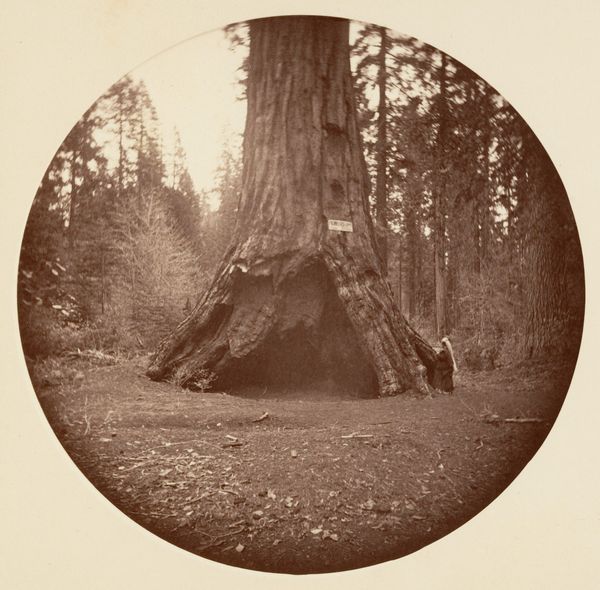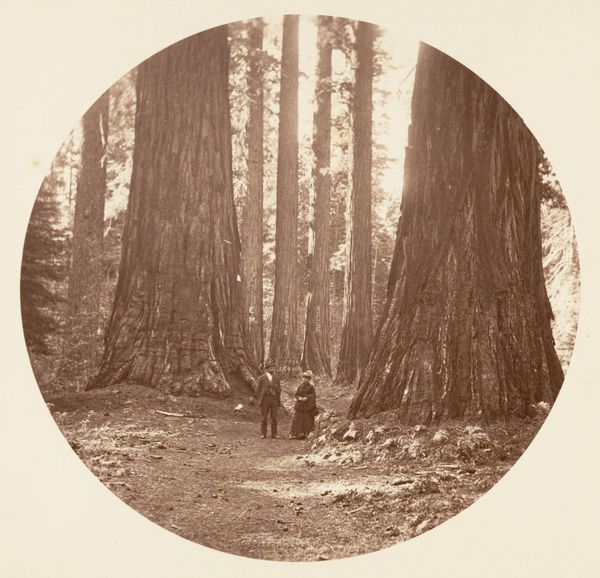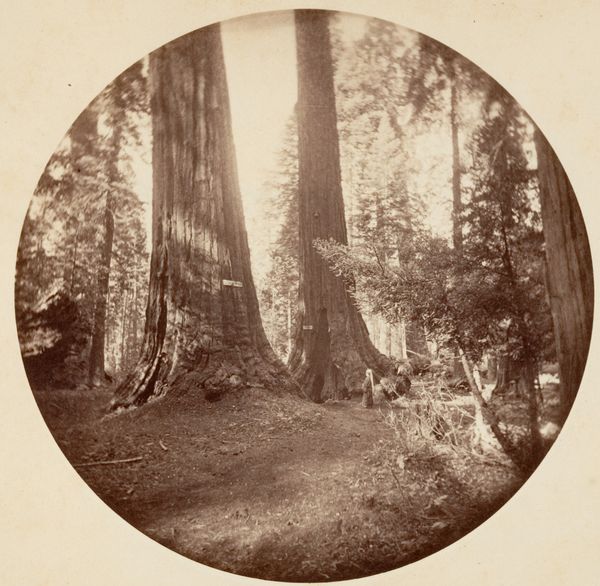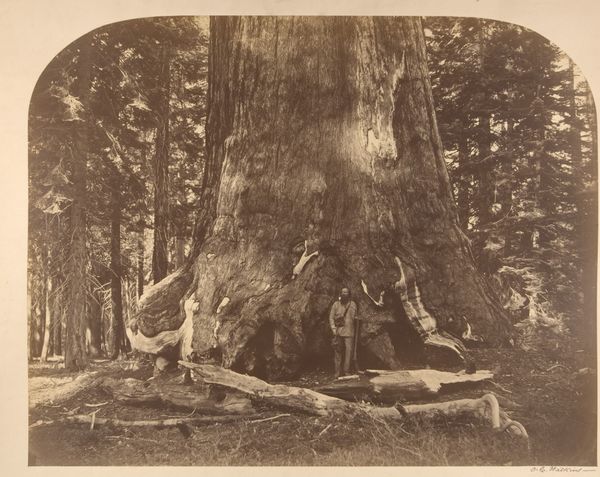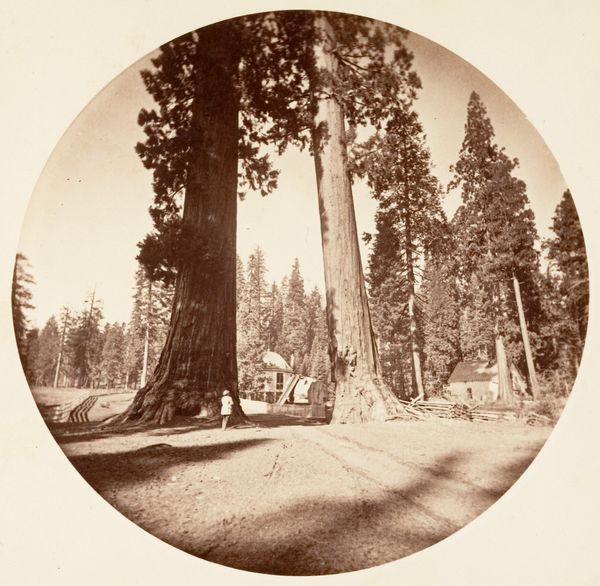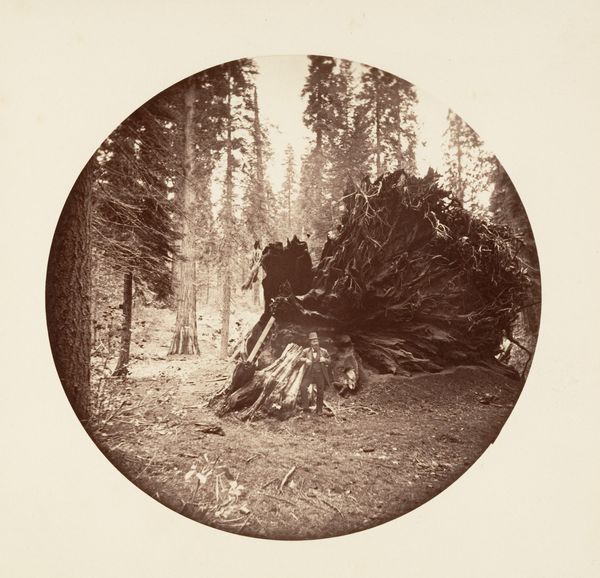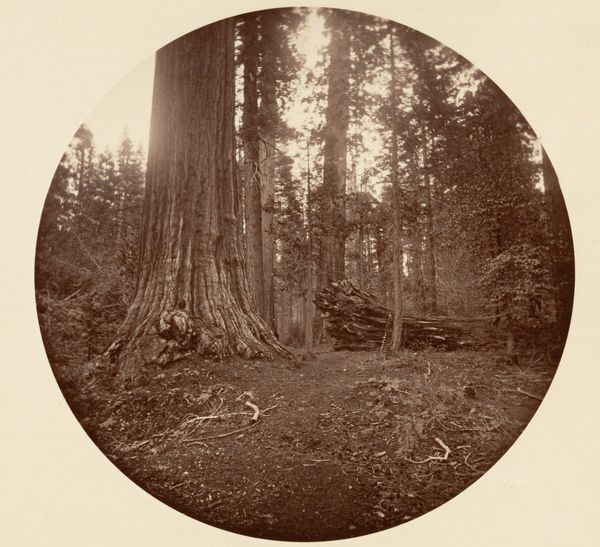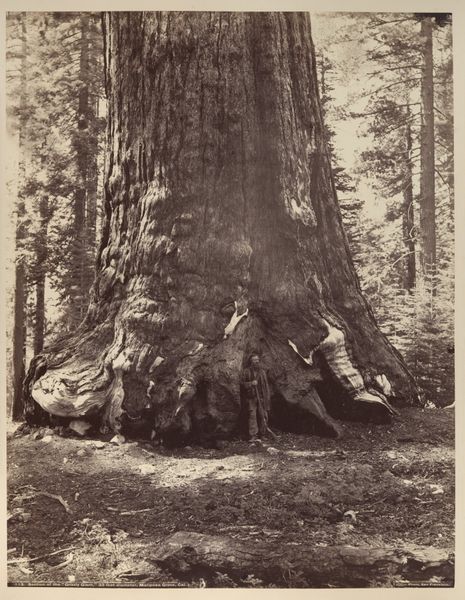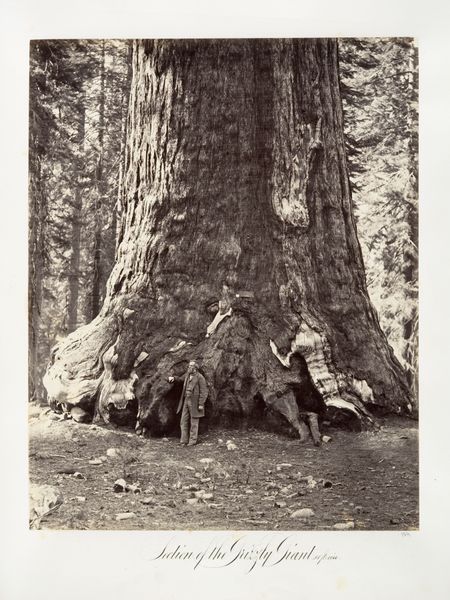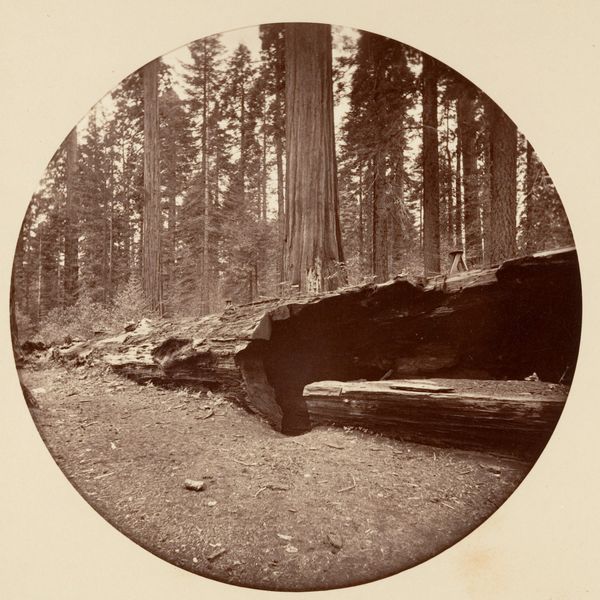
The Pride of the Forest - Calaveras Grove 1876 - 1880
0:00
0:00
Dimensions: Image: 12.5 x 12.5 cm (4 15/16 x 4 15/16 in.), circular Album page: 24 x 25.1 cm (9 7/16 x 9 7/8 in.)
Copyright: Public Domain
Curator: Before us, we have Carleton Watkins's albumen print, "The Pride of the Forest - Calaveras Grove," a photographic work that dates roughly from 1876 to 1880, currently housed at the Metropolitan Museum of Art. Editor: My first impression? An overwhelming sense of the colossal. The composition, almost perfectly circular, forces your gaze onto the monolithic tree. Curator: Absolutely. The scale is key. Watkins uses those small figures, almost as an afterthought, to emphasize the sheer, humbling size of the sequoia. It evokes the sublime. Editor: It's a study in contrasts, too. Notice the almost obsessive detail in the tree's bark, the delicate needle-like foliage, and then the relative blur of the figures. It guides your eye, dictating what is important. Curator: The image operates, I think, on a symbolic level. The giant sequoia in the cultural imagination often becomes a representation of the American West, its strength, resilience, and longevity mirroring the perceived spirit of the nation itself. The cutting of the stump on the right foreshadows things to come, and the threats to those great natural symbols. Editor: Interesting observation about the cut stump. Looking again, the light emphasizes that area drawing your attention towards that void and foreshadowing change. The tonal range, however, is quite limited. Browns and greys...does that serve to flatten the space? Curator: To flatten and to historicize. The sepia tones, characteristic of albumen prints, imbue the scene with a sense of the past, almost as if it were a faded memory. I agree on the tonal range and it serves the symbollic charge of the scene. Editor: So the materiality of the print reinforces the symbolic weight? It's a self-aware commentary by Watkins on the ephemeral nature of images and the very real presence of this ancient forest? Curator: Precisely. A memento mori and testament to the grandeur, simultaneously. The title too underlines that. The print becomes an emblem, a poignant marker in time and collective values. Editor: An effective blend of technique and ideology then. Focusing just on that single aspect makes the scene particularly unique within his work. Curator: Agreed. An encapsulation of a moment poised between awe and... well, let's say complicated progress. Editor: Indeed. A photograph that yields to reflection.
Comments
No comments
Be the first to comment and join the conversation on the ultimate creative platform.



